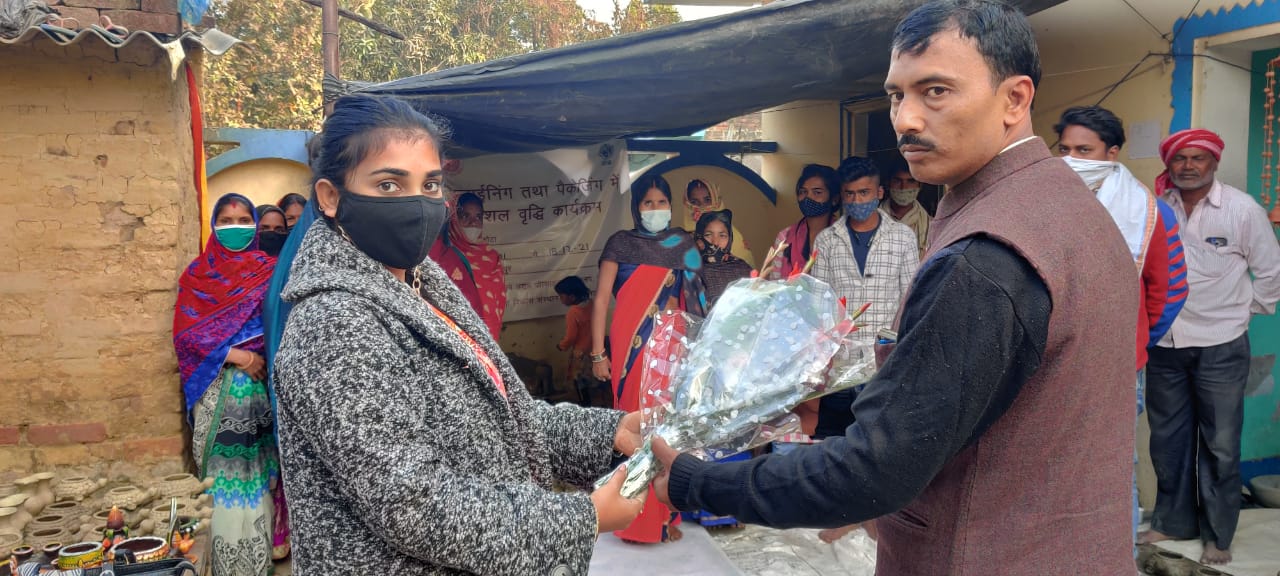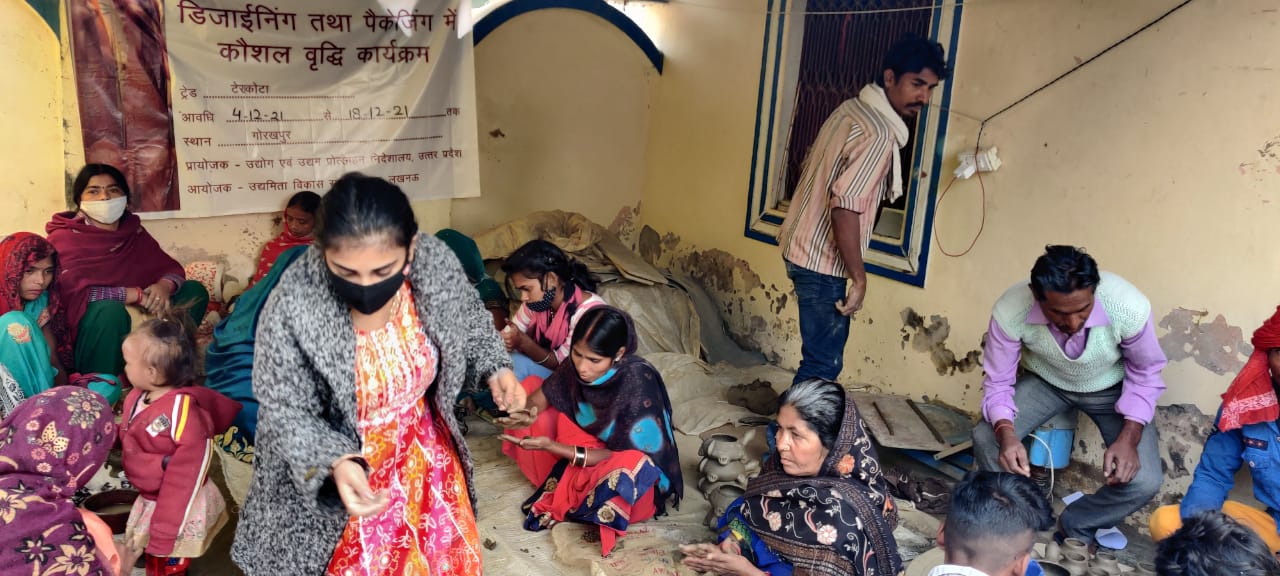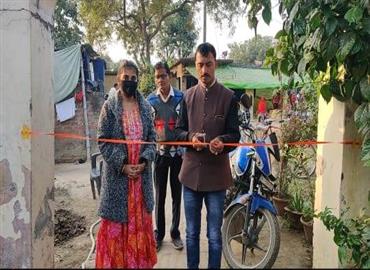Terracotta Work
Program:- Designing and Packaging, District:- GORAKHPUR, Trade:- TERRACOTTA Work, Training period: 15 days Place:- GORAKHPUR (U.P.), Sponsor Directorate of Industry and Entrepreneurship Promotion, Kanpur, Uttar Pradesh, Organizer Udyamita Vikas Sansthan, Lucknow, Partner Organization Pahal The Beginning Lucknow, Uttar Pradesh,
The history of terracotta dates back thousands of years, it is said that terracotta was first used in prehistoric art. An example of this is found in the Venus of Dolby Vestonice (26,000-24,000 BC), which was discovered under a layer of ash at a Paleolithic camp in Moravia. The name goes back to ancient civilizations such as the Indus Valley, Mesopotamia and China. The word terracotta comes from the Italian language and means "baked clay". Early artisans made clay vessels for storing food, water and other items. Terracotta was used to make decorative lace, roof tiles, sculptures and even large-scale architectural structures. Terracotta was used to make figurines, such as the Venus of Dolby Vestonice and the Enthroned Goddess Statue of Çatalhöyük. Terracotta's warm colors and durability maintain its popularity, whether in pottery, sculptures or architectural ornamentation. Terracotta, also known as terra cotta or terra-cotta literally 'baked clay'; Latin terra cocta 'baked earth', is a clay-based non-vitreous ceramic fired at a relatively low temperature. It is therefore a term used for certain types of pottery, Terracotta bricks and tiles have been used for centuries to build domestic and civic structures. It has been produced by indigenous cultures around the world for thousands of years.
Dry clay that is baked in a kiln or in a pit over combustible material, at a typical firing temperature of about 1,000 °C (1,830 °F), although in historical and archaeological cases, it can be as low as 600 °C (1,112 °F). Terracotta can be both glazed and unglazed baked clay and is often used as a part of decorative architecture. Clay is one of the oldest building materials, having been in continuous use since prehistoric times. To provide longevity to objects, artifacts or buildings constructed using clay, baked clay or terracotta came into vogue. Due to its light weight, it is used extensively for architectural purposes around the world.
Objective of the Programme:- The aim of the workshop is to experiment and develop new products as per the needs and preferences of the contemporary market by utilizing the traditional skills of the artisans and introducing new techniques and technologies for improved production. The artisans of handicrafts should be able to experiment boldly in design. For this purpose it is necessary to provide a framework and process which gives the necessary freedom to the designer.
Another main purpose of using packaging is to exaggerate the product. A marketer needs to grab the attention of a viewer to buy the product. Packaging should be able to beautify a product to add to its visual appeal. The purpose of product packaging is to protect the product from damage. Product packaging not only protects the product during transit from the manufacturer to the retailer, but it also prevents damage. With each passing day the packaging material is becoming less and less. Apart from the traditional paper-plastic, glass, metal packaging, people have started to explore the use of new raw materials
It can instantly attract the attention of the audience towards a product. You can create interest in the customer's mind towards a product through attractively designed packaging.
Importance of Designing/Packaging: The role of packaging has become very important as it helps to grab the attention of the audience. Packaging can be used by marketers to encourage potential buyers to purchase a product.Packaging is also used for convenience and information dissemination on how to use, transport, recycle or dispose of the package or product.
Features of Designing/Packaging It is the process of enclosing and covering a product or object. It is a group of general activities of product planning. Packaging is related to the designing and making of wrappers for a product. It is an art and science.v It is a new practice and unique promotional technique. It is a means of safe delivery of the product to the customers or consumers.
It is necessary to provide training on packaging of handicrafts to artisans and exporters to upgrade the present packaging of their handicraft products and to do better business in India and abroad. This will help in improving their sales and livelihood along with the benefits of related fields.





